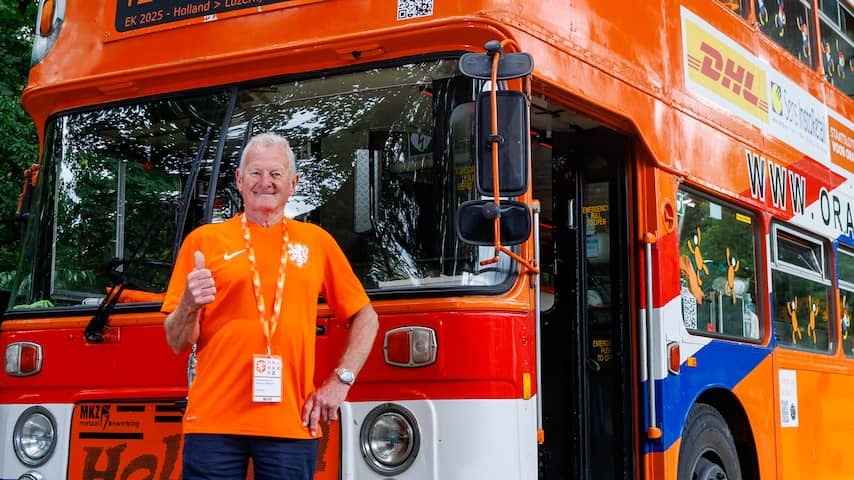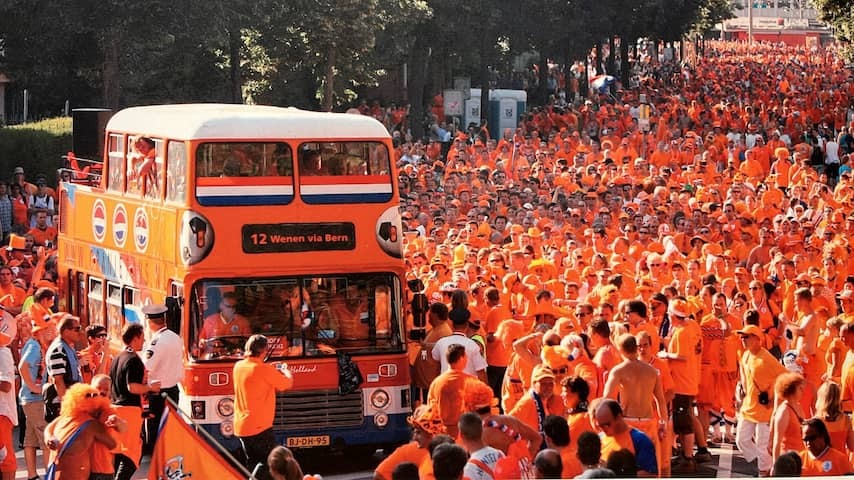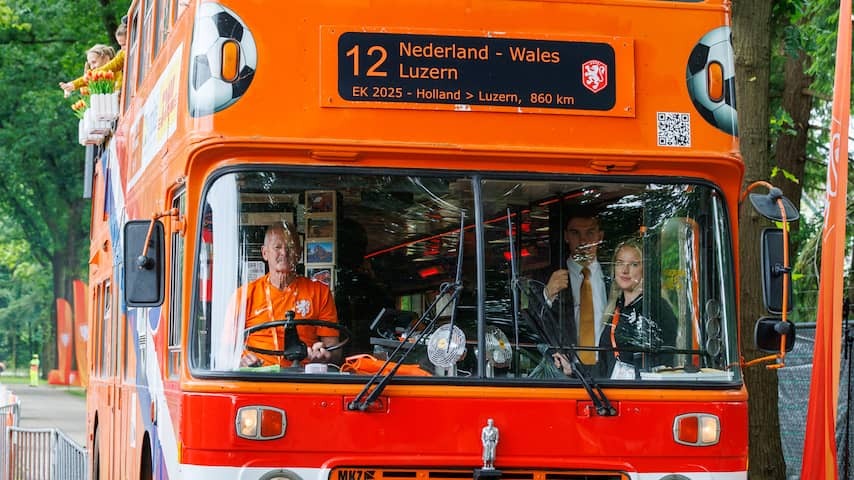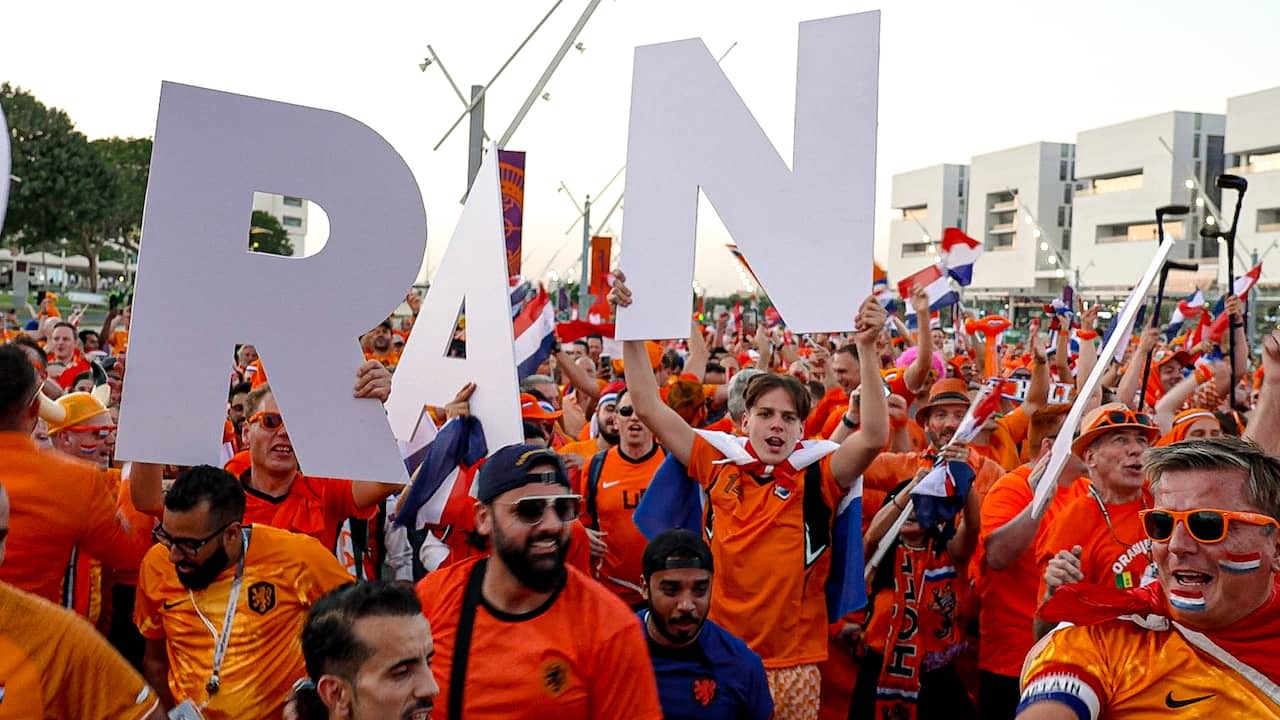
Frans Peeters has been traveling the world as the driver of the Oranjebus (Orange Bus) for 21 years for fan marches with Dutch supporters. This month, he is in Switzerland with the iconic vehicle for the European Championship. “Brazilians held up an electricity cable for us.”
During his interview with NU.nl, Peeters suddenly gets up to grab a photo of his display cabinet. The photo from seventeen years ago shows a sea of people in orange, with the supporters’ bus in the foreground, of which the now 74-year-old Peeters was already the driver.
“That was in Basel,” says Peeters. “100,000 people in a fan parade for the quarter-final match against Russia at the 2008 European Championship. It was the first time that so many people were at a fan march. Switzerland has a special place in the history of our bus.”
This month, Peeters returns to Switzerland with the Oranjebus for the Women’s European Championship. There will not be as many people at the matches of the Orange women in Lucerne, Zurich, and Basel as in 2008. But that shouldn’t spoil the fun, according to the Brabant driver.
Breaking records was never the goal of the group of Orange fans who bought a bright red London city bus from 1980 in 2004. They thought it would be fun to travel to the stadium by bus, purely for their own use.
They converted the bus, painted it orange, and hired Peeters – a former professional driver – as the driver. “Nobody would have thought that we would be so famous 21 years later,” Peeters says with a laugh.

Oranjebus Was in South Africa and Brazil
The Oranjebus has become a household name among football fans in the Netherlands and far beyond. For every match at a major tournament, the bus accompanied the procession of Orange fans to the stadium. Loud music is played and there is partying.
Peeters remembers the first time he drove the bus. “That was towards Portugal for the 2004 European Championship. We drove past a gas station and there were people on the side of the road taking pictures of our bus. It already brought a smile then.”
In the years that followed, people at tournaments all over the world walked behind the iconic Oranjebus. From South Africa to Brazil and from Andorra to Qatar. Since the won European Championship of 2017 in their own country, the Oranjebus also goes to final tournaments of the women, except for the 2023 World Cup in Australia and New Zealand.
It is worth the effort to get the bus on location, says Peeters. Especially for World Cups in other continents, mountains of work have to be done by the group of Orange fans. “If there is a tournament outside Europe, the bus has to be on the boat in March. In the winter, it has to be prepared.”
“It is incredibly expensive, but we have good sponsors. If I had to pay for it myself all those years, I would be sleeping in a cardboard box now.”

‘Half of the Procession Consisted of Ukrainians’
Peeters mentions the European Championship in Germany last year as a highlight. The Oranjebus went around the world thanks to the hype created by the song Links Rechts (Left Right) by Snollebollekes. Television stations from all over the world made an item about the Orange march.
“Especially Dortmund (for the semi-finals, ed.) was special. 110,000 people jumping from left to right… That’s such a magical feeling. I always participate in Links Rechts myself. Then I stop the bus, stretch my legs, and we drive on again.”
Peeters especially enjoys how the bus unites people in and outside the Netherlands, he says. “I remember that during the World Cup in Brazil, people in a dangerous neighborhood held up electricity cables with sticks so that we could pass. Beautiful, right? And in Qatar, sheikhs danced along behind our bus. Something like that never happens.”
Peeters thought the most beautiful tournament was the 2012 European Championship, where Oranje played its three group matches in Kharkiv, Ukraine. “At the first match you could still see how deeply communism is ingrained. People didn’t even dare to wave.”
“But for the last match, half of the procession consisted of Ukrainians in orange. Our bus allowed people to forget reality for a while. That still moves me.”

Also in Qatar, Fans Dance to Snollebollekes in Front of the Iconic Oranjebus
‘This Bus Is My Baby’
Thanks to sponsoring, the bright orange bus received an upgrade for the Women’s European Championship. For example, tulip planters have been attached to the bus, the bus has a brand new sound system and a statue of Rinus Michels has been placed on the front of the bus.
“Many fans help with the bus. I mainly focus on the technology. The bus feels like my baby. It is located near my hometown of Chaam, so I can tinker with it a few times a week. A 45-year-old bus has defects, but replacing it is not an option. There is only one real Oranjebus.”
And only one driver. “They just have to make the bus rollator-proof, because I don’t intend to stop. I get just as much satisfaction from a tournament with the women with fewer supporters as I do from that day in Basel in 2008. We are going to make it one big party again.”